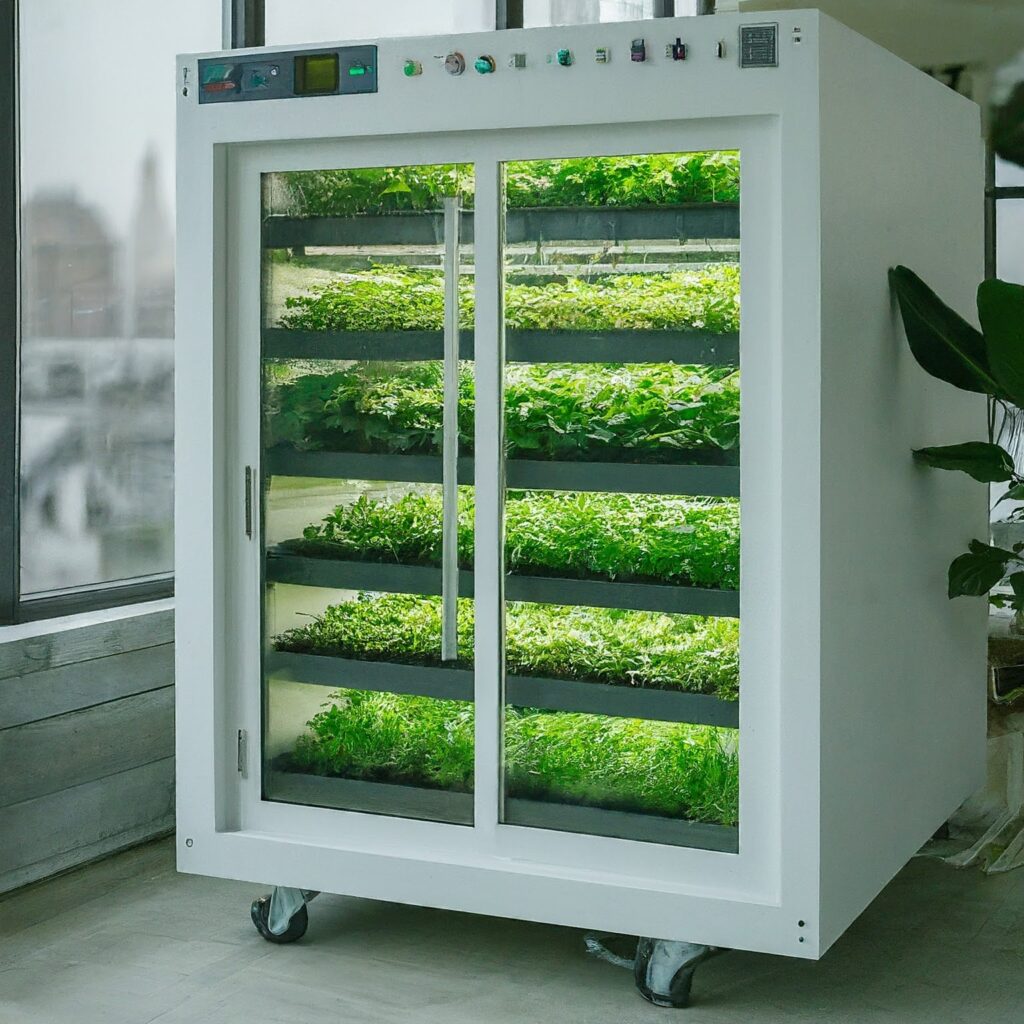Plant Growth Chamber

Specifications
1. Temperature Control:
Range: Typically from -10°C to 60°C (14°F to 140°F), with some models offering broader ranges.
Accuracy: ±0.5°C or better.
Uniformity: Usually within ±1.0°C across the chamber.
2. Humidity Control:
Range: 10% to 95% relative humidity (RH).
Accuracy: ±3% RH.
Uniformity: ±5% RH.
3. Lighting:
Type: LED, fluorescent, or incandescent.
Intensity: Adjustable, with levels ranging from 100 to 1500 µmol/m²/s (photosynthetically active radiation).
Spectral Control: Some chambers allow for control over light spectra (e.g., red, blue, far-red).
Photoperiod Control: Adjustable day/night cycles.
4. Airflow and Ventilation:
Airflow: Horizontal or vertical airflow systems to ensure uniform temperature and humidity.
CO2 Control: Optional feature, with levels ranging from ambient to 2000 ppm or higher.
5. Chamber Size:
Volume: Ranges from small benchtop units (~0.5 cubic meters) to large walk-in chambers (>20 cubic meters).
Shelving: Adjustable, with multiple tiers to accommodate different plant sizes.
6. Control System:
User Interface: Touchscreen or digital control panel.
Programmable Settings: Allows for the creation of custom growth programs, including temperature, humidity, light cycles, and CO2 levels.
Data Logging: Some models offer data logging and remote monitoring via software or app.
7. Construction:
Material: Stainless steel interior for durability and easy cleaning.
Insulation: High-quality insulation to maintain stable internal conditions.
Doors: Double-sealed, with glass viewing windows.
8. Power Requirements:
Voltage: Typically 110-120V or 220-240V, depending on the region.
Power Consumption: Varies based on size and features, ranging from 1 kW to over 5 kW.
9. Safety Features:
Alarms: For temperature, humidity, or power failure.
Backup Systems: Optional UPS (uninterruptible power supply) for critical systems.
Features
1. Advanced Environmental Control:
Temperature Gradient Control: Allows for different temperature zones within the same chamber.
Rapid Temperature Cycling: For studies requiring quick temperature changes.
Dehumidification Systems: To maintain low humidity levels when needed.
2. Lighting Options:
Dimmable Lighting: Adjusts light intensity gradually to simulate natural dawn and dusk conditions.
Full-Spectrum Lighting: Mimics sunlight by providing light across the entire spectrum (UV to far-red).
Custom Light Programs: Programmable light cycles for day/night simulation and seasonal light changes.
3. CO2 Enrichment and Control:
CO2 Injection System: Allows for precise control over CO2 concentration to simulate different atmospheric conditions.
Automated CO2 Control: Adjusts CO2 levels automatically based on preset conditions or plant requirements.
4. Air Circulation and Ventilation:
Variable Speed Fans: Adjust airflow rates to prevent microclimates and ensure uniform environmental conditions.
Air Scrubbing Systems: Remove ethylene and other gases that can affect plant growth.
5. Shelving and Space Utilization:
Adjustable Shelving: Allows for customization of shelf height to accommodate various plant sizes.
Multi-Tier Designs: Maximize growing space by allowing multiple levels of plants within the chamber.
Modular Shelving Systems: Easily rearrangeable shelves to suit different experimental setups.
6. Control and Monitoring Systems:
Touchscreen Interface: Intuitive control of all chamber functions, with easy access to programming and real-time adjustments.
Remote Monitoring: Internet-connected systems for remote monitoring and control via smartphones or computers.
Data Logging: Continuous recording of environmental data (temperature, humidity, light, CO2) for analysis.
Alarm Systems: Alerts for deviations in temperature, humidity, or other critical parameters.
7. Watering and Irrigation Systems:
Automated Watering Systems: Timed or sensor-based watering to maintain consistent soil moisture levels.
Drip Irrigation: For precise water delivery to individual plants.
Misting Systems: To maintain high humidity or for foliar feeding.
8. Energy Efficiency:
Energy-Saving Modes: Optimizes power usage during periods of low demand (e.g., night cycles).
LED Lighting: More energy-efficient than traditional lighting options, with lower heat output.
9. Safety and Security Features:
Password-Protected Access: Restricts unauthorized changes to chamber settings.
Emergency Shutdown: Automatic shutdown in case of power failure or critical malfunction.
Backup Power: Uninterruptible power supplies (UPS) to maintain critical functions during power outages.
10. Customization and Flexibility:
Modular Design: Chambers can be customized or expanded based on research needs.
Interchangeable Components: Allows for swapping of lighting types, shelving configurations, or other components.
